There’s a hard truth many in the architecture and interior design world don’t talk about: The industry is severely lacking in diversity. It’s been estimated that only 3% of architects in the United States are Black, and only 0.3% are Black women.
Here at The Manual, we celebrate diversity of every kind. That’s why we want to share with you four incredible Black architects who are forging a path toward inclusion in the industry by creating thoughtful, inspiring, and stylish spaces.
Valery Augustin, AIA, NCARB
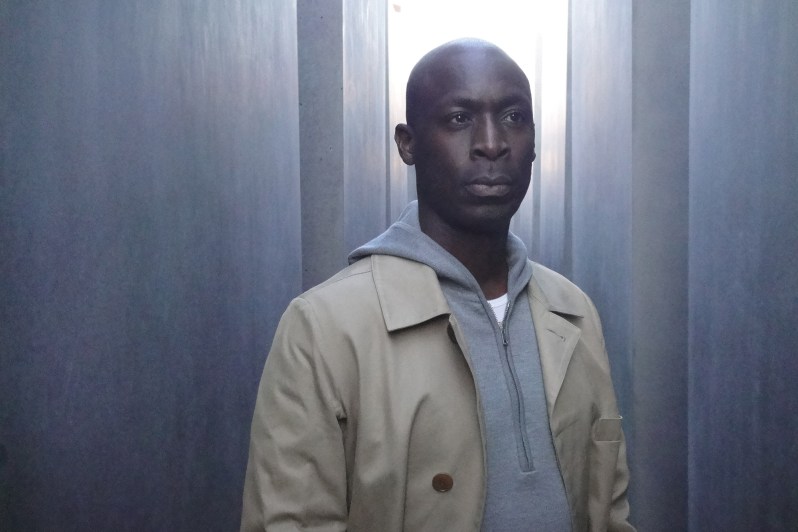
Why You Need to Know Valery:
A world traveler, Valery Augustin has worked in a variety of fields and places throughout the architecture industry. Starting with interning for architects in Miami, he has worked in London, spent a summer studying at Bauhaus, and went to graduate school in Los Angeles. Along with running his own architecture firm, Valery is a professor at the USC School of Architecture and is its director of Global Studies. Such a diverse background allows him to approach each project with a unique world view.
His Work:
From rethinking public restrooms at a local park to helping the community by designing an emergency homeless shelter, Valery has his finger on the pulse of contemporary design. His projects are fresh and new, yet with a familiar feel. It’s all thanks to his ability to delve into how and why we use space, allowing him to add humanity to places that are typically utilitarian in design. The results are thoughtful creations that are accessible, visually striking, and socially conscious.
His design for the restaurant Delicious at the Dunbar, for example, taps into the soul of jazz and honors the location’s historical past. Originally built by an African American couple in 1928, the building was a hotel for Black jazz musicians. Located in South Los Angeles, the hotel was named after African American novelist and playwright Paul Lawrence Dunbar. Today, it is affordable housing for seniors with Delicious as an anchor for the community as a whole.
“You have to believe in yourself and know you can do it. Don’t let the lack of diversity stop you.”
In speaking with each architect, we asked if they had any advice for Black students looking to get into a field with this lack of diversity. Here is Valery, in his own words:
His Words:
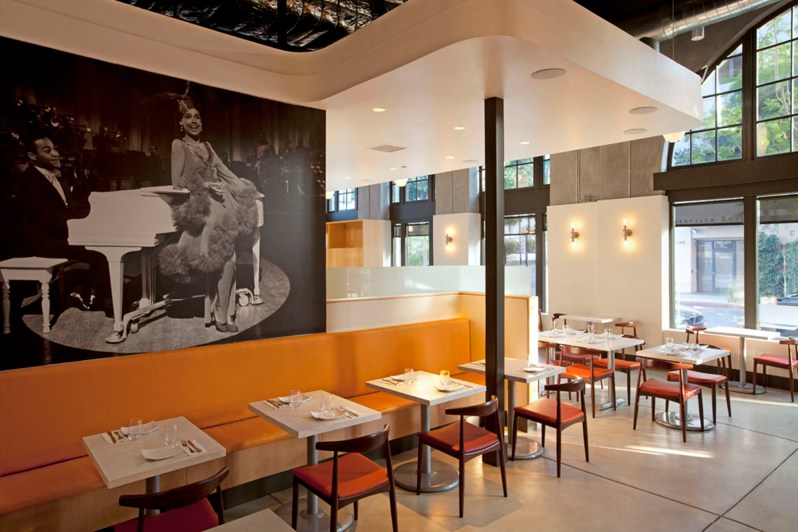
“You have to believe in yourself and know you can do it. Don’t let the lack of diversity stop you. You have to make a place for yourself. You’re in control. Students now are a bit more empowered in terms of the ability to advocate for themselves. Craft your own identity and create your own path. Find mentors of all different types — someone from a different background. You might find commonality or shared experiences across all spectrums. Be open to everything. Be inquisitive and curious.”
We also asked each architect if they wanted to weigh in on the recent civil unrest happening throughout the country and around the world. Here is Valery’s response:
“Right now, there’s a lot of talk, and I’m more about action. Conversations are important, but action needs to happen. Will you speak up on a random Wednesday in March? It’s not an academic discussion, [racism] has real impact on daily lives.
“There’s a long-standing policy of entrenched societal issues. I don’t necessarily have an answer, but that doesn’t mean we shouldn’t try. Many people are unaware; that is the one difference with what is happening now. People are realizing this is every day for Black males. There’s a knee on your neck every day, and people are recognizing that. So perhaps there is a difference, and people are understanding that and it will trickle out. I believe in the collective action of us as people. If we as a society act differently, that’s when real change can happen. Be the change that you want to see in the world.”
“I don’t necessarily have an answer, but that doesn’t mean we shouldn’t try.”
Samantha Josaphat, RA, NOMA, LEED
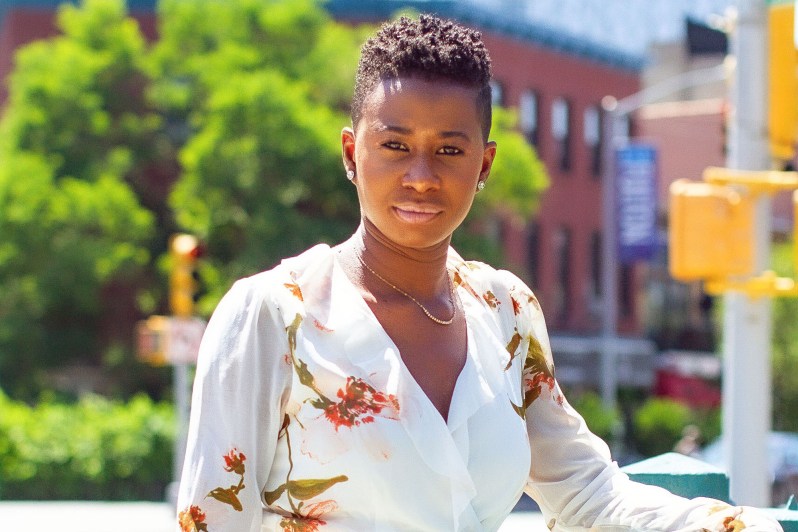
Why You Need to Know Samantha:
The name of her company says it all. Samantha Josaphat was only the 397th living Black female architect to become licensed in the United States – a country with over 110,00 architects total. Samantha has turned Studio 397 into a certified Black/Woman-Owned Business and is also LEED Certified, meaning her buildings are healthy for us and Mother Earth. A keen eye for problem-solving through design helps Samantha’s work stand out in a male-dominated industry.
Her Work:
Since becoming a licensed architect in 2017, Samantha has focused on using her strong work ethic and creativity to collaborate with architects, designers, contractors, and developers in a way that allows her to lead projects and problem-solve through design when solutions are unclear.
With a wide range of projects under her belt, Samantha combines comfort and excitement in her work, creating everything from a boutique clothing shop to an upscale condo. There’s a fun side to Samantha that can be glimpsed in her work. Check out the residential condo project, which features a cheeky soaking tub that can be viewed from the kitchen through a mullioned window (a privacy curtain is there for those less exhibitionist bathers).
“My proudest accomplishment is becoming a licensed Architect 10 years after starting architecture school.”
Her Words:
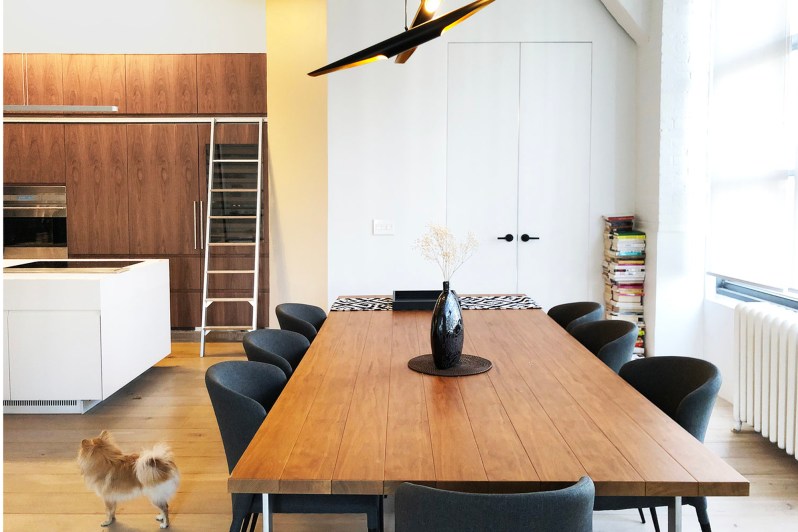
“Dismantling white supremacy shouldn’t just be up to a Black Architect, ideally like others our work ethic and passion alone could play a role in destigmatizing the idea of what an idea of what an Architect should look like/be, whether that is through the work of being an activist in our industry and/or through sharing with others the dedication and practice you have for your craft.
“We are fortunate to live in a time where social media allows us to share our work across the globe without having to wait for a major publication source to reach out to us. I’d also advise creating a support group of folks inside and outside the industry while also finding multiple mentors, as having various mentors at different experience levels can be beneficial when having to operate in different environments all in the span of a day.”
“Your work ethic and passion play a role in destigmatizing the idea of what an Architect should look like/be.”
Jerel McCants, AIA, LEED Green Assoc.
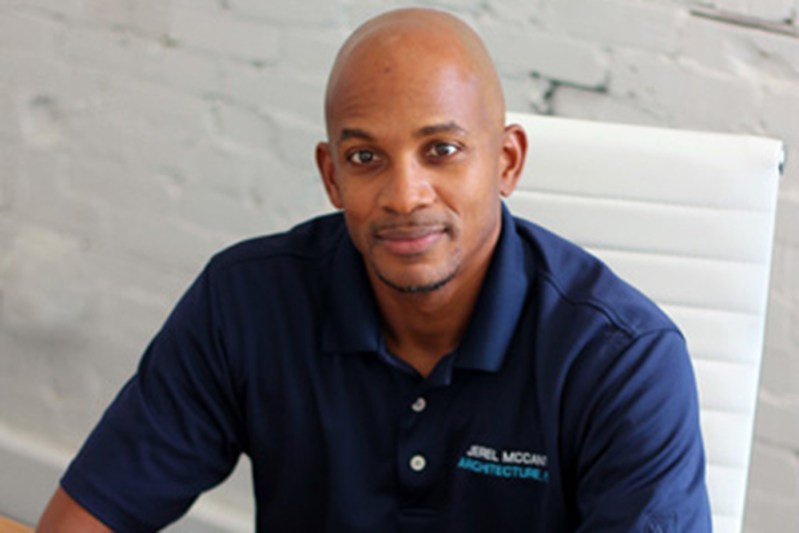
Why You Need to Know Jerel:
Jerel McCants was born with a passion for architecture. He has always had the desire to “create objects that contain special parameters that can be experienced on a human scale.” With a strong aptitude for math and geometry, Jerel achieved his Architectural Engineering degree from Tennessee State University. He turned that into a successful career that now sees him running his own firm, McCants Architecture.
His Work:
Ever since becoming an architect and getting that professional seal with his name on it, Jerel has worked to create high-concept designs for projects ranging from homes to churches to office buildings.
We especially love his design for Mortar & Pestle, a restaurant and bar in Tampa’s Seminole Heights neighborhood. It’s a space that is at once high-end and quirky. With a nod to steam-punk elements, the stools feature bicycle pedals and chains, while the centerpiece of the space is a mechanical-looking beer tap system behind the bar. These unique features are balanced with leather upholstery and a sleek color palette of grays and blacks.
Thanks to his inventiveness and creativity, Jerel’s firm is in high demand. His reach extends beyond his base in Florida to as far away as New York and Michigan. If you want Jerel for your next project, you’ll likely have to wait in line.
“My first name, Jerel, means Strong, Artful, Colorful, often inventive. This reinforces my belief that this is my God-given talent to give to the world”
In His Words:
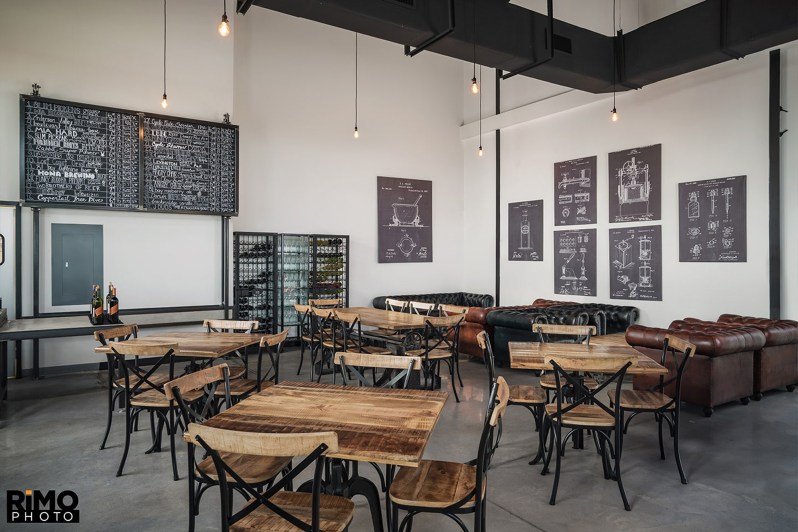
“Understand that you are competing within a global economy with persons that are trying to be the best so they can position themselves into a higher lifestyle. I encourage Black architecture students to compare themselves to the best of their peers and strive to be better because, in the game of life, most people are starting on the playing field, while most often Black people are trying to get on that playing field. Meaning that you are starting behind most people, and you need to excel just to catch up.
“The lack of diversity is by design, both as a deterrent to achieving a better life and influence in your community and also as an economic factor. The economy of diversity is that it is easier to withhold opportunities to those who have not had access to it by way of segregation and discrimination. This forces people into lower socio-economic areas to suppress those to work in lower-level jobs to keep those at the top in small numbers. It’s the pyramid effect in capitalism, few at the top and masses at the bottom working for low wages in jobs with no advancement. You have to break out of this and constantly look for ways to circumvent this system to achieve your goals.
“Also remember, being an Architect is an honor regardless of cultural or racial background. Having a legacy that you can trace back through your family is interesting, too, but knowing that the world’s greatest architects created the pyramids in Egypt and Nubia is also special and inspiring.”
Jerel’s additional comments on current events:
“With the current events that have consumed the world over the murder of Mr. George Floyd, recorded so that everyone could see the atrocity committed by those who have taken an oath to protect and serve the people and uphold the law. This affects me personally as I was wrongly accused of theft, and the police detained me with a probable cause order from a judge. They realized they had the wrong person, but only after I had to sign a confession that if they found any stolen items inside my house that I would be convicted. It is just that simple to have your entire world change at a moment’s notice. If I would have resisted cooperating with the police, maybe I could have been another statistic of an African American losing their life.
“This can happen to anyone at any time, and I am hopeful that reforms in the way this country polices with support from the judicial system will be radically changed to be more in line with other developed nations. As we all have seen lately, we will never be free in a country that was founded on racial superiority and slavery. We can only hope that each generation will be more free than the former. I use the word “Free-ish” to define the African American experience in the United States.”
“I could have been another statistic”
Susan Nwankpa Gillespie, RA
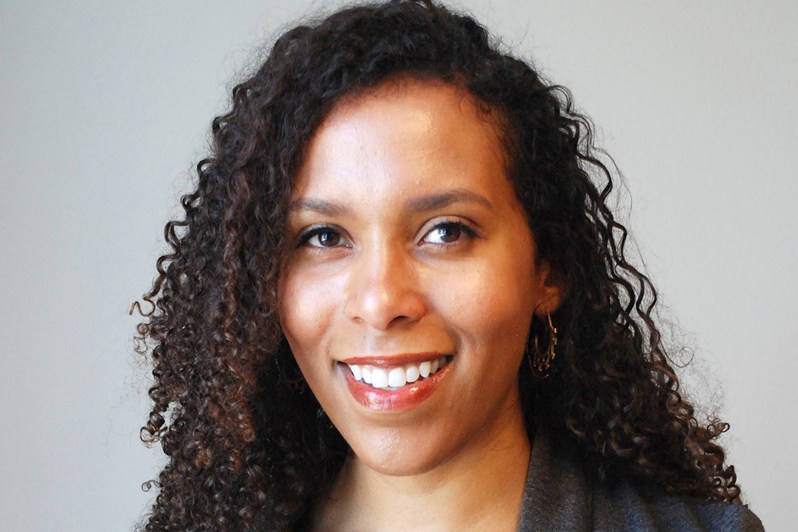
Why You Need to Know Susan:
Susan Nwankpa Gillespie came into the field in a “roundabout way,” and it has offered her a wide spectrum of experiences and education. Starting as a Political Science major, Susan shifted to architecture, studying for her Masters of Interior Architecture at the prestigious Pratt Institute. After gaining experience in the field working for a furniture company and then as a materials librarian, Susan completed her masters in Architecture at UCLA Los Angeles. Now she runs her own company, Nwankpa Design, and has a range of projects under her belt that includes everything from residences to restaurants.
Her Work:
Her bold, human-centered approach to architecture and how we experience space makes Susan stand out from other architects. With an eye for detail, she is able to come up with designs that are refined while incorporating exciting moments to keep her spaces fresh and innovative.
Susan’s concept for Prova Pizzeria showcases her talent. Created in association with world-renowned Belzberg Architects, the restaurant’s design is a reflection of its cuisine. High-end craftsmanship and attention to using quality materials resulted in a rustic yet modern aesthetic, just like the classic-style pizza on the menu.
“I wanted the opportunity to explore my personal design agenda and be challenged in new ways.”
In Her Words:
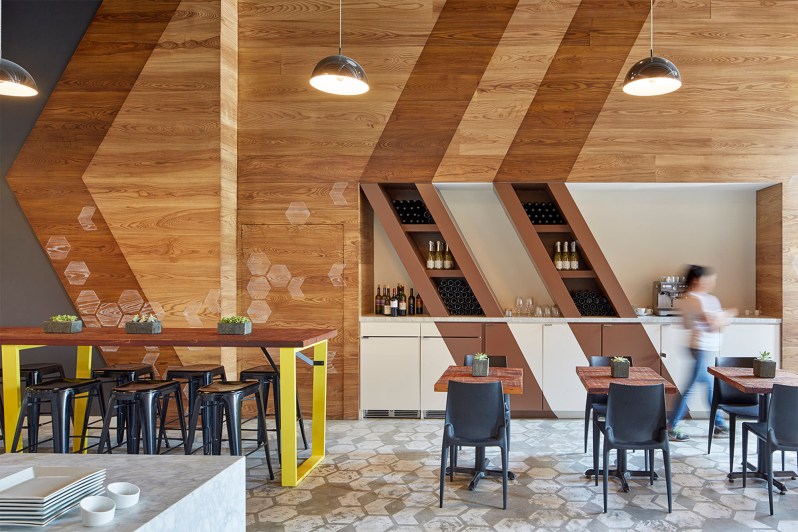
“Don’t let the lack of diversity hold you back from doing anything you want to do. It is important to find people that you connect with in other ways — design ideas, shared experiences, etc. A career choice is also about a lifestyle choice, so make sure you can see some paths in architecture that are attractive to the way you want to live your life.
“That being said, lack of diversity is a real problem. I think because I’ve often been a minority in many situations, I didn’t realize how much being the only one affected me. It does take a toll mentally, emotionally (and financially sometimes) to not recognize yourself in your surroundings. That’s why I think it’s important to encourage others and find supportive relationships for yourself.”
“Don’t let the lack of diversity hold you back.”
A final note:
This article has been in the works for months now. We’ve corresponded with each of these architects since early March. In the course of coordinating interviews and finalizing this piece, civil unrest has spread across the country. While the timing may seem coincidental, this is not a one-time deal for us at The Manual. We’ve been actively working to diversify our coverage of amazing architecture from around the world. This includes showcasing more designs by women, Latinx, Asian, and Black architects.
Here is a link to a continually updated list of Black architects and designers around the country. Please consult this list for your next project. It’s full of incredible, passionate, and talented people.


